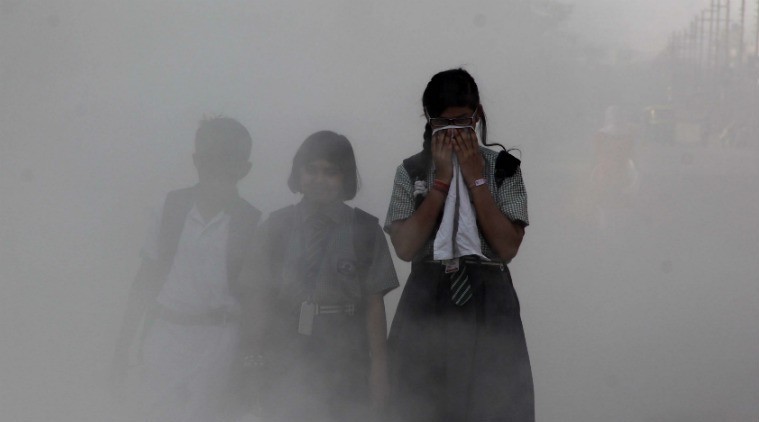
Air pollution poses a precarious threat to public health and environmental stability in Pakistan, particularly in urban centers like Lahore and Karachi. Indeed, the growing evidence of its harmful impact deeply alarms public health experts. Toxic pollutants have directly triggered a surge in respiratory illnesses—including asthma and chronic bronchitis—as well as cardiovascular diseases. Furthermore, these conditions imperil vulnerable groups, including children and the elderly, emphasizing the crisis’s severity. Consequently, Pakistan’s poor air quality rankings should drive the government to take urgent action. This year, dense smog—so bad that it could be seen from space—covered broad swaths of the country, catapulting the situation to the world scene and turning it into a public health catastrophe.
According to the 2024 Air Quality Life Index (AQLI) study, almost the entire population of Pakistan breaths air contaminated with dangerous fine particulate matter (PM2.5) and a cocktail of harmful pollutants such as nitrous oxide, carbon monoxide, ozone, and sulfur dioxide. With this in mind, Pakistan, with its population of 254 million, now ranks as the world’s third most polluted country, experiencing PM2.5 concentrations exceeding the World Health Organization (WHO) standard of five micrograms per cubic meter by over fourteen times. Notably, these pollutants inflict not only immediate respiratory and cardiovascular distress but also contribute to prolonged or even brief exposures that cause neuropsychiatric complications, ocular irritation, skin disorders, and long-term chronic diseases such as cancer.
Meanwhile, it has become one of the most formidable environmental risk factors, significantly contributing to diseases like asthma, lung cancer, ventricular hypertrophy, Alzheimer’s and Parkinson’s diseases, psychological disorders, autism, retinopathy, and adverse fetal outcomes, including low birth weight. The severity of these threats is exacerbated in impoverished states like Pakistan, where warning systems, preventive measures, and management protocols are inadequate. To make matters worse, Pakistan’s increasing urbanization has intensified pollution issues, making it the fastest urbanizing country in South Asia. As a result, the country confronts an impending environmental disaster with serious consequences for public health.
Globally, air pollution is one of the most important concerns of the twenty-first century, causing extensive harm to human health and ecosystems. Motor cars, industrial operations, and the use of fossil fuels continue to feed the catastrophe. The depth of the situation in Pakistan is highlighted by the lack of extensive and ongoing air quality monitoring networks, which leaves broad regions without valid baseline data. As a result, officials underestimate the full degree of the damage caused by air pollution.
At the heart of this dilemma are structural and diverse reasons. Rapid urbanization, an increasing number of automobiles, unregulated industrial emissions, extensive use of fossil fuels, and insufficient enforcement of environmental standards all contribute to Pakistan’s poor air quality. Furthermore, a lack of strong public transit infrastructure exacerbates the problem, as more private automobiles flood the roads, raising PM2.5 and other pollution emissions. These elements, in turn, pollute both indoor and outdoor air, jeopardizing human health, economic productivity, and environmental sustainability.
Certainly, the consequences of this crisis are far-reaching. Health systems struggle under the weight of pollution-related diseases, while the economy bears the costs of reduced workforce productivity, heightened healthcare expenses, and damage to agriculture and ecosystems. Furthermore, it lowers quality of life, especially for vulnerable populations including children, the elderly, and those with pre-existing health concerns. Without immediate and sustained action, the long-term damage to human health and the environment will undoubtedly be permanent. To properly fight this situation, Pakistan’s authorities must implement a comprehensive and uncompromising approach. Reducing emissions is the foundation of this method, and attaining it requires structural adjustments. For example, switching to alternative energy sources like solar and wind power may drastically lessen our dependency on fossil fuels.
In addition, government officials must strictly enforce pollution rules for both automobiles and industry. They should also invest in public transit and encourage electric automobiles to help cut traffic pollution. Simultaneously, eco-friendly activities like afforestation and the use of green technology may absorb pollutants and improve air quality. Crucially, politicians must create transparent, targeted, and realistic policies that are adaptable enough to solve particular difficulties. Robust air quality monitoring systems must support these regulations, providing reliable data to assist evidence-based decision-making.
Subscribe to Our Newsletter
Get the latest CounterCurrents updates delivered straight to your inbox.
Misbah Ashiq Ali is a freelance columnist, based in Faisalabad, Pakistan. She can be reached at [email protected]














































